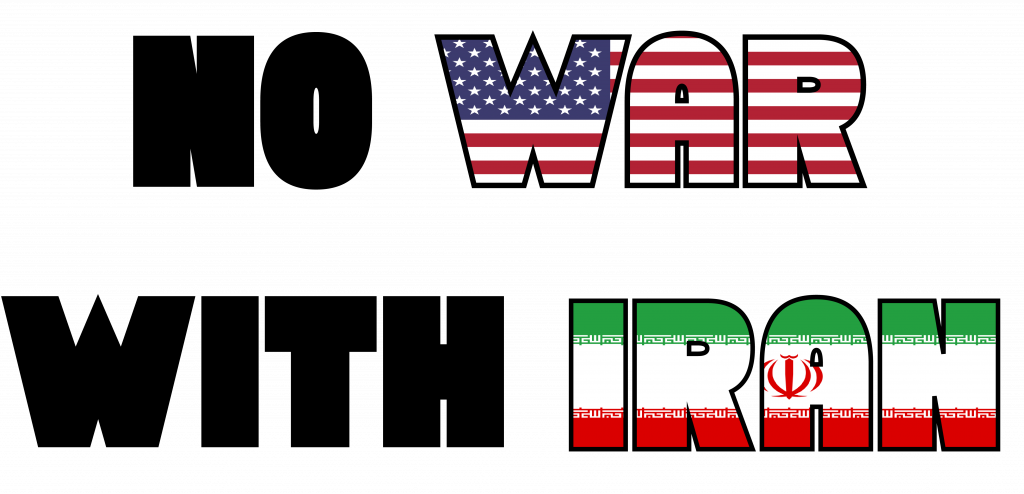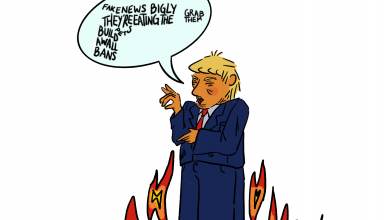US-Iran Escalation

The turn of the decade saw an intensification of US – Iranian relations, characterized by the assassination of Qassem Soleimani, Chief of Iran’s Revolutionary Guard Corps’ Quds Force. Soleimani has been instrumental in the ongoing battle to defeat the Islamic State of Iraq and the Levant (ISIL). Upon announcing Soleimani’s death, President Trump used the following rhetoric to describe the late general: “He was a bad guy…He was a bloodthirsty terror and he’s no longer a terror. He’s dead.” Historically, during United States involvement with the Middle East, the White House has incited rhetoric to demonize these Middle Eastern nations, their governments, and their inhabitants so as to garner support for American interference.
On December 27, 2019, Kata’ib Hezbollah, a militia group backed by Iran, attacked a military base in Northern Iraq, killing an American contractor and wounding several Iraqis and Americans. In the days to follow, President Trump attacked areas of Syria and Iraq controlled by Hezbollah, resulting in the death of 25 individuals and leaving more than 50 wounded. On December 31, 2019, hundreds congregated around the US Embassy in Iraq, in reaction to US aggression in the region. Protesting US interference in the region, protesters chanted “America, leave, leave!” and stormed through the entrance of the embassy, where they set fire. Just days later, Washington ordered the assassination of Qassen Soleimani by airstrike. Soleimani died on January 3, 2020.
The global community remained frightened as they watched tensions escalate towards what appeared to be, the brink of war. Yet, President Trump claimed, “We took action last night to stop a war. We did not take action to start a war.” Days later, on January 8, Iran fired missiles at Iraqi Military bases housing US personnel.
Tensions continued on January 9, when Iran shot down Ukraine International Airlines Flight 752 which was headed outbound from Tehran for Kyiv, Ukraine. All 176 passengers, 82 Iranians, 63 Canadians, and 11 Ukrainians, died. Canadian Prime Minister Justin Trudeau gave a speech that same day, stating, “This is something that happens when you have conflict and war. Innocents bear the brunt of it and it is a reminder why all of us need to work so hard on de-escalation, moving forward to reduce tensions and find a pathway that doesn’t involve further conflict and killing.”
These incidents are not isolated, but constituents in a decades-long conflict between Washington and Tehran. The United States has been incessantly involved in Iranian political affairs for decades. It backed Mohammad Reza Pahlavi’s brutal rule as the Shah of Iran from 1941 until the Iranian Revolution in 1979, during which Iranians pushed back against the United States for intereferring in Iranian politics. In 1980 the United States gave Iraq billions of dollars to invade Iran. The countries’ relations became more strained in the decades to follow.
In the 2002 State of the Union Address, President Bush referred to Iran, Iraq, and North Korea as constituting “an axis of evil, arming to threaten the peace of the world.” Bush’s fear mongering and demonization of these states continued, “By seeking weapons of mass destruction, these regimes pose a grave and growing danger. They could provide these arms to terrorists, giving them the means to match their hatred. They could attack our allies or attempt to blackmail the United States. In any of these cases, the price of indifference would be catastrophic.”
The election of President Trump in 2016 severely worsened the relationship between the two countries. Trump has remained outspoken about his “maximum pressure” approach in conducting foreign policy with Iran.
In an infamous speech in October 2017, Trump declared the following: “Today, I am announcing our strategy, along with several major steps we are taking to confront the Iranian regime’s hostile actions and to ensure that Iran never, and I mean never, acquires a nuclear weapon.” Several months later, in May 2018, Trump announced his withdrawal from the Iran Nuclear Deal, an international agreement that prevents Iran from obtaining a nuclear weapon. The deal “cuts off Iran’s pathways to a nuclear weapon, puts in place vigorous, intensive, and unprecedented transparency measures that are necessary to verify that Iran cannot pursue a weapon.” Trump’s decision to withdraw from the deal altogether will reinstate the sanctions previously placed on the Iranian government.
What initially appears to be a conflict between Tehran and Washington is in truth a conflict that has historically and continues to put the entire region in danger. Escalations of political tension between the United States and Iran, along with unavoidable tensions with surrounding Middle Eastern states, will contribute to a violent degradation of Middle Eastern people.




